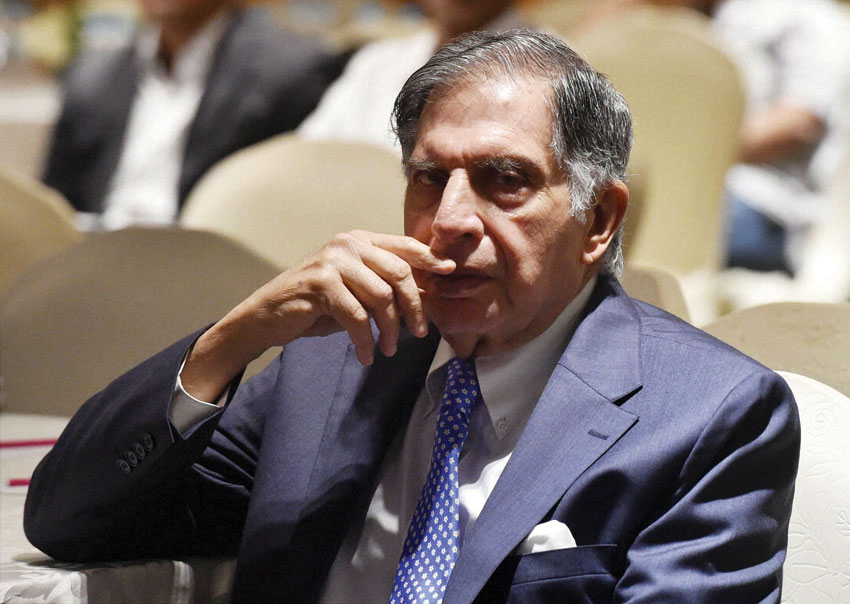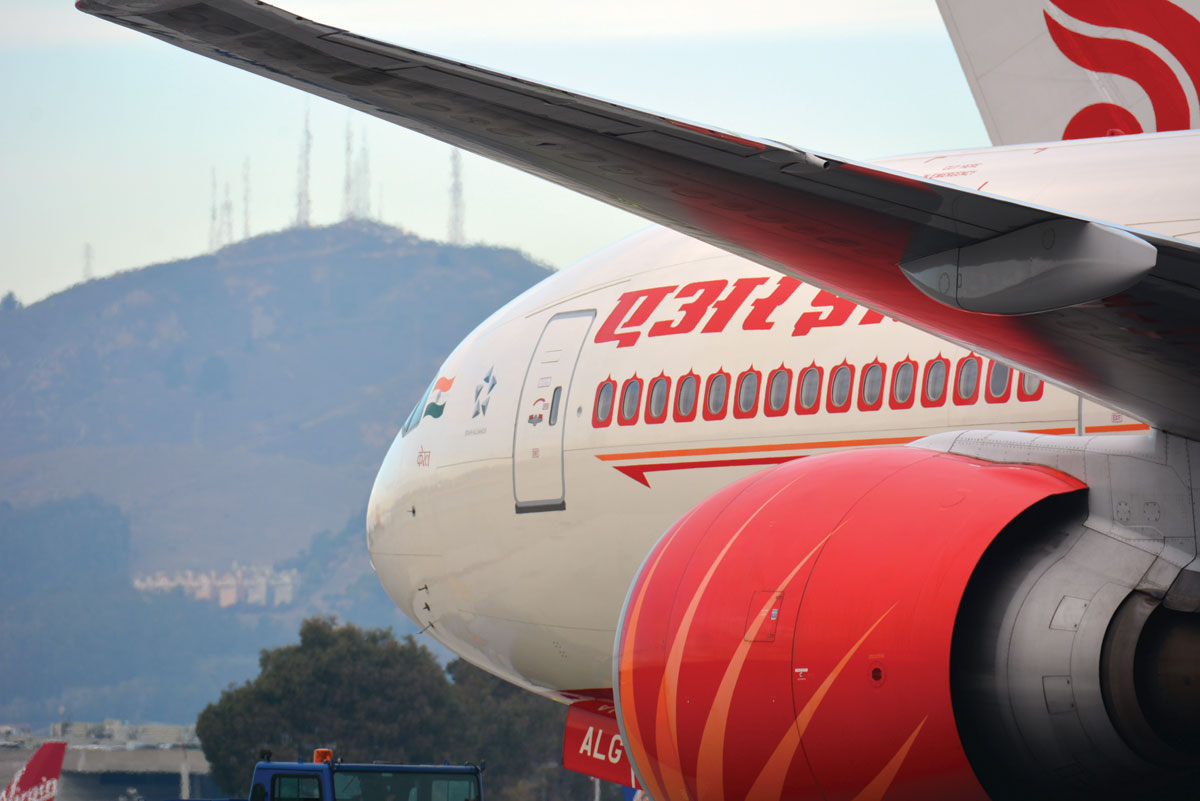‘Maharaja’ on Sale: Search for a Lifeline for Air India
File photo of the inaugural Air India flight as it arrives at San Francisco International Airport. (Amar D. Gupta/Siliconeer)
The Government of India has approved the disinvestment of the beleaguered national air carrier Air India that ran for almost 70 years and ushered the new born nation into a jet age. This is despite the airline, whose mascot “the Maharaja” stirs up nostalgia in all ages, enjoying global renown and being placed at par with the likes of Lufthansa, Emirates and British Airways.
Finance Minister, Arun Jaitley conveyed the center’s decision to prevent any further loss of tax payers’ money to keep alive an airline that has failed in a highly competitive environment.
“Air India can continue to be a national carrier and somebody else pay for its management,” Jaitley said.
The idea of privatization is premised on the fact that the airline’s share of the market stands at a meagre 14% share and the debt burden had shot up to a whopping Rs. 500 billion of which Rs. 200-250 billion may be linked just to the valuation of aircrafts.
In 2015-16 the carrier reported a loss of about Rs. 32.87 billion and in 2014-15 the loss was at Rs. 58.59 billion despite it receiving Rs. 239.93 billion of the Rs.302.31 billion equity infusion promised by the government under a financial restructuring plan of 2012.
The national think tank, National Institution for Transforming India (NITI) Aayog has also recommended unbundling though in three parts; international and domestic operations, and the real estate assets, before a strategic partner is offered up to 100% equity.
Commenting on the transformation process Civil Aviation Minister, Jayant Sinha laid down government plans to effect elaborate changes in governance, operating performance fleet acquisition and ownership.
As a surprise of sorts, the pilots have not opposed the privatization but have appealed for settlement of arrears as were promised by Ashwani Lohani when he took charge as Managing Director two years back.
This amounts to about Rs. 12 billion that got accumulated since 2012 when salaries of 27,000 staff including pilots and crew were slashed to tide through the tough times and of this the pilots’ share is believed to be about Rs. 4 billion.
Representatives of both the Guild of Pilots of Wide-bodied Aircrafts and the Indian Commercial Pilots’ Association are optimistic that a professional management devoid of unnecessary government interference would help in the airline’s revival.
But unions of several other Air India employees have threatened large scale protests if the privatization is not stopped.
There are murmurs that the Aviation Ministry is trying its utmost to give a last shot at reviving the debt laden PSU that is surviving on Rs. 300 billion bailout package extended by the previous Congress-led UPA regime but from what it appears disinvestment is a certain.
Despite all talk of sale expansion plans to induct twenty-five big and small aircrafts, launch of flights from Delhi to Washington, Stockholm and Copenhagen, to Los Angeles, African countries and some other cities, and hiring of 300 to 400 pilots and 600-700 cabin crew remain afoot.
It will be interesting to observe how the airline will be sold, in bits and parts, or in equity.
Reports are emerging that the Tata Group is the forerunner amongst four or five more potential buyers, including Singapore Airlines that jointly owns and runs Vistara, a domestic carrier, with the Tatas.

Most probably the prospect of India’s air passengers growing at 17% annually and lucre of significant international routes could be the cherry to pick for.
Air India was originally started by Indian industrialist Jamsetji Tata in 1932 as Tata Airlines but later got nationalized after independence in 1948.
During its inception years it was the first Asian airline to lease a jet aeroplane and the first in the world to have an entire fleet of jets.
In its entire life time it holds the distinction of flying the Prime Minister on official trips and conducting rescue missions of Indians abroad.
It holds a record of airlifting close to 170,000 people out of Kuwait during the First Gulf War in 1990.
In 2007, Air India was merged with Indian Airlines by the Congress-led United Progressive Alliance government.
In the last decade, unsound governance pitted it much below the cheaper no frills airlines that led to pre-tax losses for at least eight years.
Last March, the national audit body found out that the company had deliberately understated its operating losses by nearly $1 billion between 2012 and 2015.
Ministers have tried to privatize the airline before, but their plans have so far come to nothing.
Way back in 2001 the previous Bharatiya Janta Party government under Prime Minister Atal Behari Vajpayee had almost struck the deal for sale with the Tata Group and Singapore Airlines, but for the backing out of Singapore Airlines at the last moment.
There were allegations that immense lobbying from other private carriers who feared stiff competition was behind the deal turning sour.
Meanwhile the state’s Central Bureau of Investigation has filed three First Information Reports regarding blatant irregularities during the UPA rule that accelerated the downfall of the airline as the ‘Air India scam.’
The irregularities pertain to purchase of 111 aircraft for Air India for about Rs. 700 billion at a time when the airline was making a profit of only Rs. 1 billion, and was running very low load and the purchase was funded by huge loans acquired from many U.S. and Indian banks.
Besides, Air India leased 15 expensive planes when it did not have pilots to fly the aircraft, the FIR read.
This meant five Boeing 777s and five Boeing 737s standing idle and making for an estimated loss of Rs. 8.4 billion during 2007-2009.
The last FIR is regarding the giving up of profitable routes and schedules allowing “foreign airlines an unrestricted entry into India without any reciprocal benefits.”


